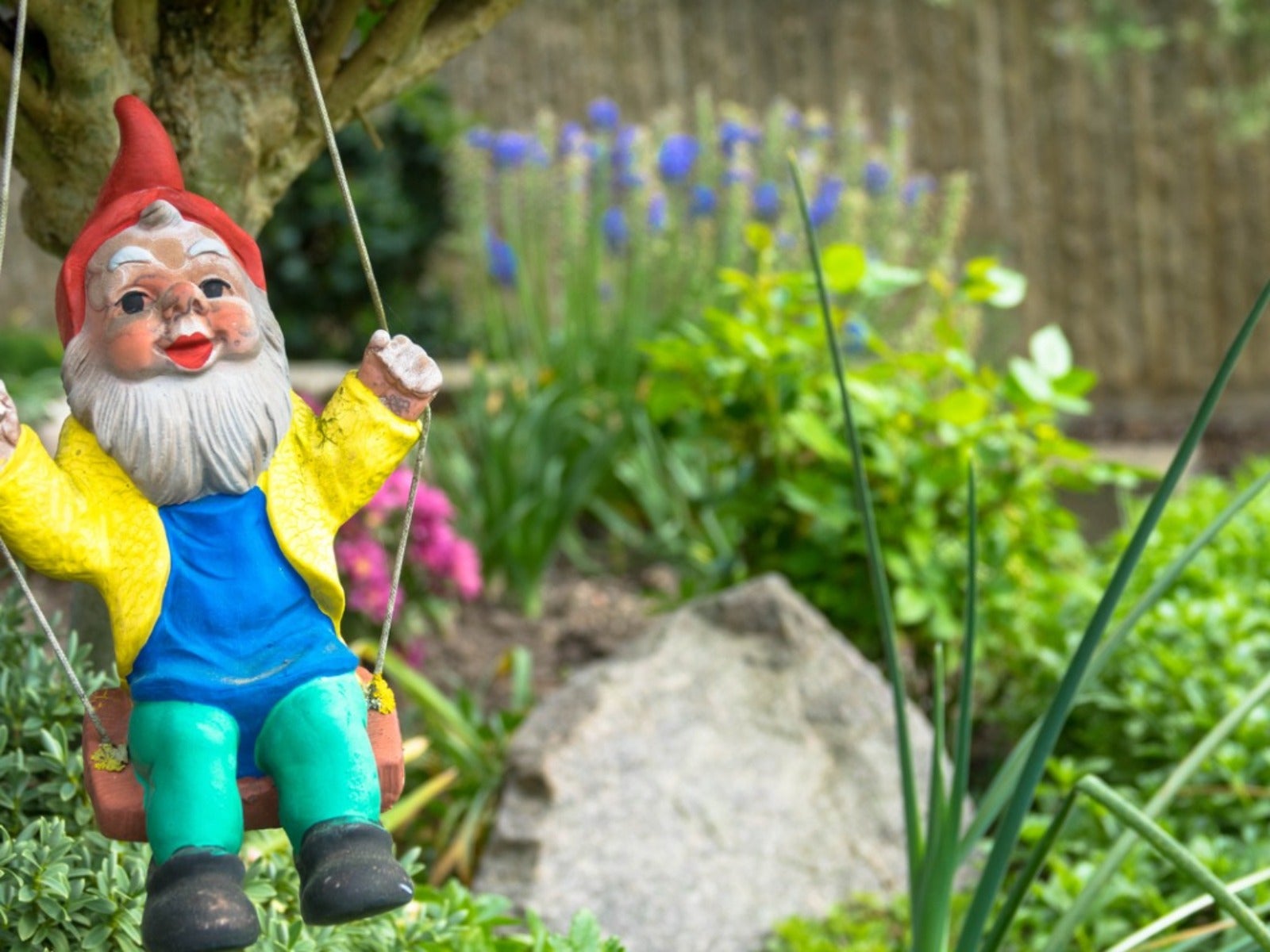How To Create A Whimsical Gnomecore Garden


With the rise of cottagecore during the pandemic—the cozy aesthetic that brought comfort to many—it might not be too surprising to hear that gnomecore is now a thing. A trendy new aesthetic that embraces nature with a little bit of fantasy, it’s perfect for gardening. Here’s how to create the modern gnome garden.
History of Garden Gnomes
These little guys have been around for a long time. The traditional garden gnomes that have been popping up in garden beds for many years originated in Germany in the 1800s. They are cheerful little men with long white beards and pointed hats.
The history of gnomes, however, is much older and comes from northern Europe. The ancient origin of the name gnome likely comes from Greek for “earth-dweller,” which is fitting. Gnomes in folklore are little beings who live underground and guard treasure.
Some stories say they will live in homes or barns and watch over people and livestock, perhaps the origin of placing a gnome figure in your garden. They are said to work at night, tending to crops and gardens.
According to traditional stories, gnomes are about 6 inches (15 cm.) tall, usually male (female gnomes are mysteriously rare), and live to be 400 years old. They are very strong, smoke pipes, and are vegetarian. One reason you might not see female gnomes is that they rarely venture from their homes.
Are Garden Gnomes Evil?
Certainly not, although like any living being, they are individuals and have unique personalities, so some might be nicer than others. Generally, a gnome is considered to be a figure of good luck. Rather than being evil, they guard against it.
Be careful, though. If you treat your gnome badly, or break a figurine, it could bring you bad luck. A modern game of kidnapping garden gnomes is risky for this reason.
Sign up for the Gardening Know How newsletter today and receive a free copy of our e-book "How to Grow Delicious Tomatoes".
Outdoor Gnome Garden Ideas
There is no reason to believe keeping a garden gnome indoors will bring bad luck, but they are more at home outside. They will be happier in your garden where you can embrace the historical folklore and the modern gnomecore trend. Here are some ideas for gnome gardens:
- Gnome Figures -- Start with the basics and invite some gnomes into your outdoor space. With the popularity of these little guys still on the rise, they’re not hard to find. Any home or garden center will have many options. Situate them in your garden beds. They prefer to be among nature rather than on a porch or patio.
- Animals -- Gnomes are nature dwellers and best friends of wildlife. Add some figurines to keep them company. They love woodland creatures like foxes, badgers, squirrels, birds, insects, and friendly bears.
- Mushrooms -- Another nature element that gnomes love are mushrooms. You don’t need to grow real mushrooms, but if you have a natural area with some decaying wood that is growing them, leave them in place. Add some artificial toadstools to your flower beds for your gnomes to enjoy.
- Natural Plantings -- Gnomes are at home in nature, so a gnome garden should be more natural and less cultivated. Think cottage garden or native beds. Let the plants run a little wild and don’t aim for perfectly trimmed hedges or plantings.
- Gnome Homes -- If you’re really into the trend, create a home base for your gnomes. As with the previously popular fairy gardens, you can find little figurines of doors, furniture, and even food to set up housekeeping for little garden gnomes. Consider dedicating one bed to your little friends, with everything they need.
Gnomecore, like other trends, will likely wane, but garden gnomes will never go away. They have been gracing gardens and homes for centuries, so it’s an easy trend to embrace any day.

Mary Ellen Ellis has been gardening for over 20 years. With degrees in Chemistry and Biology, Mary Ellen's specialties are flowers, native plants, and herbs.